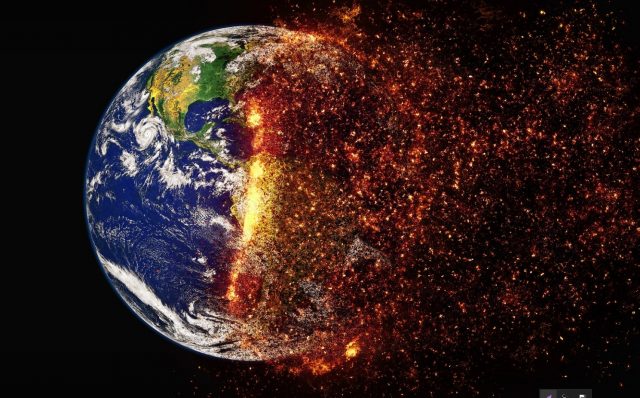Does it seem like every time you turn on the news there’s more talk of climate instability and natural disaster? Have you personally dealt with the weather gone rogue? Climate warming is a real thing and becoming an issue that can no longer be safely ignored.
Climate Warming and Climate Warning
The warning being given by nature in the current climate warming environment is alarming. Ancient sites in Italy are flooding, Australia is burning, and the polar vortex is going to hit the United States sooner than later. It’s not hard to look around and see that things are far from normal. Coping with unexpected disasters is something we all might face at the current pace of climate chaos.
Record-Breaking Hurricanes
Hurricanes with sustained winds reaching nearly 200mph used to be an infrequent occurrence. It’s now not abnormal to have more than one such storm each season. These “superstorms” threaten the environment as much as they threaten the lives of those left in their path. Having a nuclear power plant take a direct hit from a monster hurricane could make Fukushima seem like a small disaster. Flipped over and flooded cars leak gasoline and other petroleum products and these poisons enter the water table. Mass evacuations drive prices up on everything and are costly to those having to leave designated target areas for storm landfall.
Unending Fire Seasons
Major and deadly fires seem to spring up on the West coast all the time. Entire communities have been lost, never to be rebuilt again. California has taken a big hit when it comes to natural disasters known as forest fires. You are left little time to vacate your home and everything you own before it’s engulfed in flames. It can leave you scrambling, not knowing how to house your family in a last-minute leave-or-die scenario. If you live in an area where there are wildfires, anything unexpected can happen especially during the summer months.
You may encounter unexpected costs if the fire is drastically spreading near your house resulting in an evacuation, or worse, unexpected emergency repair. For these tough situations, you can’t always wait for insurance to process your claim. In the event that you don’t have enough saved and need to cover the unexpected evacuation or repair costs associated with fires, look into direct payday lenders, staying with friends or family, and any community resources that might be available during the disaster.
Sinkholes, Mudslides, and Torrential Rains
Sinkholes have begun opening up in residential areas and on roadways. It’s not unusual to see homes and vehicles swallowed up whole. Torrential rains bring additional problems through deadly mudslides and record flash-flooding. Most normal storms seem to carry more potential for record rains than ever before. The forecast is for this trend to continue without reducing the carbon footprint of every human on earth. It’s becoming unpredictable in knowing where it’s safe to live.
Polar Vortex and Deep Freezes
10 years ago, most people would look at you with a puzzled expression when speaking of a polar vortex. A polar vortex is the center mass of the coldest air present on earth. It’s fine if it stays up in the far North, where the wildlife is used to plunging temperatures. When it strays so far south that settles in the middle part of the United States, it’s a recipe for a natural disaster. The quickly plummeting temps can cause nearly instant frostbite. The all-encompassing power outages caused by increased demand for heat are taking a toll on public and private funding.
Droughts, Floods, and Crop Losses
It seems that areas are getting too much or too little in the way of rainfall. It leads to devastating droughts or floods. The entire Midwest of the US was flooded during the critical crop planting season in 2019. It has led to crop losses this country has never seen before and businesses taking a financial hit because of it. The projections are for this to be a more common problem as the planet continues to warm.
Massive Wildlife and Insect Die-Off
Flocks of birds, beached whale pods, groups of dead dolphins, and more seem to cross the news wires weekly. Even more alarming is the seeming disappearance of pollinator insects like honeybees. It’s presumed that the wildly fluctuating temperatures, loss of habitat due to manmade and natural disaster conditions account for much of the die-off in both wildlife and insect populations. Without pollinators and natural predators, the threat of increasing disease, wildlife imbalance, and further food shortages will be the result.
The hope is that by enacting the climate change directive now, some reversal of the problem will reduce the amount of damage and destruction being people and nature is experiencing around the world. In these trying times, you never know when disaster will strike.

A professional writer with over a decade of incessant writing skills. Her topics of interest and expertise range from health, nutrition and psychology.




